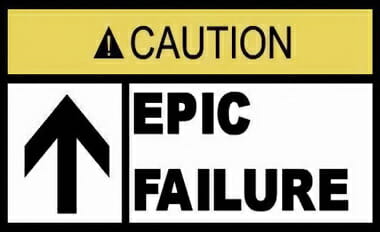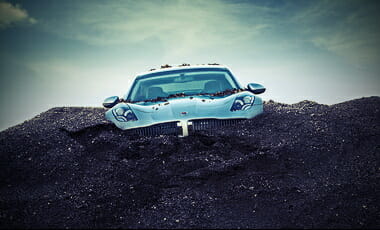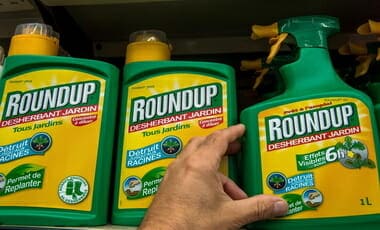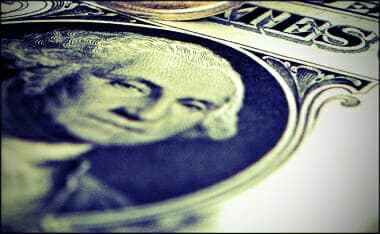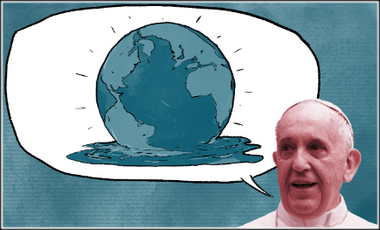The original video [2010] had some text I inserted in it that was unreadable. So I switched up the graphics in the texts spot. Plus I split the video into two to deal with THAT specific topic, individually below. They are:
Trash Islands, and, Water Bottles.
INTRODUCTION
While I criticize some stats in the two excerpts of a sermon here, take note that both the pastor and the church involved are one of the better pastors/churches in our valley (SCV) and the whole of the message is not affected by this portion. This sermon was preached on 7-11-2010. This was repotted here in 2016 from an old blog.
My main point is that when one goes to organizations that are driven by an almost eco-fascist drive or some emergent liberalism, you are going to get skewed stats. This sermon merely gives me the opportunity to critique eco-leftists ideology.
Again, I would not tell people not to go to this church. It is a wonderful church and I would encourage visiting and joining. (I chose not to name the church or pastor because many people may not understand the nuances I am pointing out and may over react.)
Pastors are people too — they are not all-knowing. Likewise, they can be influenced by the united cacophony of media, entertainment, and the like, just as many I know are. I just happened to be “in the know,” this pastor has other [more important] aspects of his office to be knowledgeable in — not to be versed in every jot and tittle of the culture war.
The original title, and thus URL for this post was:
- Plastic Pastors Critiquing an Otherwise Great Sermon
I wasn’t going to post on this subject, and all-in-all, this topic is one Christians have the moral superiority in.
A poignant point from a discussion about Global Warming via a professor I admire:
…one that bedevils an atheist philosopher friend of mine: “if human beings are part of nature, then why is that we, rather than the chimpanzee, have a special responsibility to care for nature. And if we do have this responsibility, what is its limits and rightful powers? Is irrigation moral if it leads to human flourishing, or should we ask the beavers for their permission?” I am not being facetious. If there is nothing special about us–if we have not been given “dominion” over nature, as the Bible teaches–then it seems that the atheist environmentalist has a very tough time explaining why we should be in charge and what technological innovation that disturbs natural patterns is appropriate for that responsibility. Hence, Christian environmentalism is far more defensible than any secular variety, IMHO.
(Francis Beckwith quoting a friend)

BUT, stats and movements founded on these false statistics shouldn’t be used in the pulpit. When the secular left rejects true religion, they supplement their spiritual quest with that of fallible mans quest as the object of their religion. Which is why many call — rightly so — modern day environmentalism a religion.
A recipe for disaster.
So pastors should be wary of this stretching of man’s credibility found all-too-often in the environmental progressive left. Likewise, this leftism has infected the church. Here is an exceprt from a book written by “emergent leaders” that will shed some light on how this man-made religion infects the church. This is taken from an old post entitled, “Feminist Extremism, Eastern Concepts in Youth Specialties and Gaia in Emergence“:
Via: A is for Abductive: The Language of the Emerging Church.
C is for Creation
What modern secularists called “nature” (a term that turned a sacred work of art into a profane source of “raw materials”) and what modern Christians always linked with “versus evolution” (thus turning a sacred mystery into a profane and misguided argument).
What ancient Christians viewed, along with Holy Scripture, as one of God’s two primary sources of self-revelation.
What emerging Christians will cherish as God’s art gallery in which we live and of which we are a part and for which we were created as planetary trustees and caretakers.
Later of course we get to the “action” (the “praxy” if you will) behind the emergent meaning:
… For postmoderns, it’s “Mother Earth,” holy ground tragically portrayed in the words of James Merrill: “Father Time and Mother Earth, A marriage on the rocks.” No wonder the word environment is used less and less; it’s too cold a word for this theology of “holy ground.”
If our humaneness is most manifest in our relationships—with swallows and snails, with friends and enemies, with the Father, Son, and Holy Spirit—the modern world needed marriage counseling big-time. The willingness to sacrifice living systems for commerce has meant that the lungs and other vital organs of Mother Earth are being cannibalized to the point where “natural” disasters are no longer “natural” but induced.
The mad weather patterns of the past decade are a byproduct of disappearing forests (at current rates of deforestation, Ecuador will be totally barren of trees in 20 years), disappearing healthy air, and disappearing ecosystems….
There are now over 130,000 religion and ecology projects in operation worldwide. Unfortunately, very few of them are emanating from evangelical churches.
So when people like Rob Bell, Ken Blanchard, Leonard Sweet, or Brian McLaren mention “Creation,” Al Gore and Rosemary Ellen Guiley are thrown into the meaning and action taken from that word/concept.
REMEMBER, this church the sermon came from IS NOT an Emergent type church. This sermon merely gives me the opportunity to critique eco-leftists and liberal theology a bit. So the following is a video critique of parts of the sermon followed by more information about the topics:
Floating Trash Islands
(Just so you are “in the know,” Patrick Moore is the co-founder of Green Peace. He has since left the crazy environmental movement and pushes for common sense — achievable, goals)
Plastic Pastors: Great Pacific Garbage Patch
Chapter 6 of Patrick Moore’s book is here, “The Great Pacific Garbage Patch is Full of Plastic and is Twice the Size of Texas.”
- A new study published in Proceedings of the National Academy of Sciences could mean bad news for environmental doomsayers. Forget all those warnings about the million tons of plastic debris floating in the ocean. Ignore the photos that you think show the Great Pacific Garbage Patch. Andres Cozar of the University of Cadiz in Spain is the man who once extrapolated the 1 million-ton estimate. Since then, however, he has led research that collected samples at 141 ocean sites. Cozar’s new estimate: Between 7,000 and 35,000 tons of plastic are floating in the ocean. (The Great Pacific Garbage Patch Hoax | TOWNHALL)
There Is No Island of Trash in the Pacific: But the cause of clean oceans needed a good story. Our warming planet could use another one (SLATE)
… Moore’s Garbage Patch would grow in size and fame in the years that followed. The plastic-plankton soup he’d first discovered in 1997—which oceanographer Curtis Ebbesmeyer dubbed the “Eastern Garbage Patch” or the “Pacific Garbage Patch”—gained notoriety in a 2006 series for the Los Angeles Times that won a Pulitzer Prize. Its area had doubled: Now the patch was “twice the size of Texas.” (Some reports went even bigger.) As coverage intensified—the patch’s media profile peaked between 2007 and 2009—the soup coalesced into a garbage landmass with a more official name: the “Great Pacific Garbage Patch.” In 2007, the San Francisco Chronicle called the patch “a massive, eternal, slowly swirling vortex of noxious garbage the size of a continent and the shape of death itself, just floating out there in the middle of the Pacific Ocean, mocking life, humanity, God.”
But the Great Pacific Garbage Patch has always been less substantial than it sounds, less an island in the ocean than a big idea that floats around inside our heads.
[….]
In a way, that’s the very problem the Great Pacific Garbage Patch helped to solve, when the concept was invented. Like its mirror image, the hole in the ozone layer, the patch squeezed and flattened all our worries, sequestering them in a far-off region of the globe.
That’s how and why the patch came into being, both as a fully fledged idea and a media phenomenon, at the turn of the millennium….
MORE ARTICLES:
- Garbage: Another Environmental Claim Proven to Be Hyped (WUWT)
- There is no Great Pacific Garbage Patch (PATRICK MOORE)
- Are We Really “Choking the Ocean with Plastic”? Tracing The Creation of An Eco-Myth (WUWT)
- The Garbage Philosophy Behind the Great Pacific Garbage Patch Myth (THE FEDERALIST)
Other wise known as “The Great Garbage Patch Charlie Brown!”
This is with a h/t to The Dennis Prager Show:
“Great Garbage Patch” in the Pacific Ocean not so great claim scientists
Claims that the “Great Garbage Patch” between California and Japan is twice the size of Texas is “grossly exaggerated” said the research which reckons it is more like one per cent the size.
Further reports that the oceans are filled with more plastic than plankton, and that the patch has been growing tenfold each decade since the 1950s are equally misleading, the new research claimed.
In reality it often cannot even be seen from the deck of a passing boat, said the latest analysts from the Oregon State University professor of oceanography Angelicque White.
The scientist took part in a recent marine expedition to examine the mass of plastic that is floating in the ocean and found there was a problem.
But genuine scientific concerns are undermined by scare tactics from those proclaiming the trash patch is so big that there is more plastic than plankton in the Pacific….
Another news source says this:
Size of the Ocean Garbage Patch is “Grossly Exaggerated” (see also OREGON IUNIVERSITY)
The “Great Pacific Garbage Patch” is often said to be twice the size of Texas—but that and other scary-sounding claims are “grossly exaggerated,” some scientists are now insisting. A new study shows the plastic waste patch is actually 200 times smaller than previously claimed when comparing its mass to the amount of water; if you need a Texas-sized visual, it’s actually closer to 1% of the state’s area, says researcher Angelicque White.
She is quick to add that the amount of plastic in the ocean is definitely “troubling,” but that scare tactics only “undermine the credibility of scientists.” White adds, “it is simply inaccurate to state that plastic outweighs plankton, or that we have observed an exponential increase in plastic.” At this point, trying to get rid of the plastic is too expensive and potentially damaging to the ocean’s ecology, the Telegraph reports; White recommends focusing on prevention going forward. Click to read about its sister garbage patch in the Atlantic.
MORE SCARRY HEADLINES:
- Great Pacific Garbage Patch is now nearly 4 times the size of California
- The Great Pacific Garbage Patch counts 1.8 trillion pieces of trash, mostly plastic
- The great Pacific garbage patch may be 16 times as massive as we thought
- Great Pacific Garbage Patch weighs more than 43,000 cars and is much larger than we thought
Remember, the Left leaning SLATE MAGAZINE said it was a lie to cause action. But here is SNOPES noting the two wildly separated views:
The claim that the Great Pacific Garbage Patch covers “8.1 percent of the Pacific Ocean” is also a matter of debate. The number appeared to come from a 2008 quote from Marcus Eriksen, the research director at the Algalita Marine Research Foundation:
“Charles Moore, an American oceanographer who discovered the “Great Pacific Garbage Patch” or “trash vortex”, believes that about 100 million tons of flotsam are circulating in the region. Marcus Eriksen, a research director of the US-based Algalita Marine Research Foundation, which Mr Moore founded, said: “The original idea that people had was that it was an island of plastic garbage that you could almost walk on. It is not quite like that. It is almost like a plastic soup. It is endless for an area that is maybe twice the size as continental United States.”
A 2011 study from Oregon State University, however, asserted that the real size of the Great Pacific Garbage Patch was hundreds of times smaller than commonly claimed:
There is a lot of plastic trash floating in the Pacific Ocean, but claims that the “Great Garbage Patch” between California and Japan is twice the size of Texas are grossly exaggerated, according to an analysis by an Oregon State University scientist.
Further claims that the oceans are filled with more plastic than plankton, and that the patch has been growing tenfold each decade since the 1950s are equally misleading, pointed out Angelicque “Angel” White, an assistant professor of oceanography at Oregon State.
“There is no doubt that the amount of plastic in the world’s oceans is troubling, but this kind of exaggeration undermines the credibility of scientists,” White said. “We have data that allow us to make reasonable estimates; we don’t need the hyperbole. Given the observed concentration of plastic in the North Pacific, it is simply inaccurate to state that plastic outweighs plankton, or that we have observed an exponential increase in plastic.”
The studies have shown is that if you look at the actual area of the plastic itself, rather than the entire North Pacific subtropical gyre, the hypothetically “cohesive” plastic patch is actually less than 1 percent of the geographic size of Texas.
“The amount of plastic out there isn’t trivial,” White said. “But using the highest concentrations ever reported by scientists produces a patch that is a small fraction of the state of Texas, not twice the size.”
An updated article on this can be found at THE FEDERALIST, and it comes my way with thanks to GAY PATRIOT — now defunct sadly.
Water Bottle Myths
Plastic Pastors: Water Bottles
Myths About Bottled Water Still Confuse Consumers (FOOD BEV)
MYTH 1: Less than one in four people correctly knew that there is no BPA in the plastic used to package bottled water.
FACT: PET is the only plastic used in the UK for bottled water. PET does not contain BPA. The confusion is often made as BPA is a chemical found in another type of plastic called polycarbonate which is most often found in reusable rigid water containers. US studies suggest BPA has a negative impact on human health, and these studies often use the generic term ‘plastic water bottle’ to refer to polycarbonate bottles in their findings.
MYTH 2: Four out of five consumers falsely believe drinking water from a bottle that has been left in the sun can cause cancer.
FACT: It is a myth that plastic water bottles left in cars will leach carcinogens into the water. The health scare began in 2002 when a Japanese television programme broadcast a theory that plastic water bottles were unsafe. These claims have since been discredited by Cancer Research UK say on their website: “There is no convincing scientific evidence to back up these claims or to suggest that any of these products could cause cancer.”
~ MORE ARTICLES ~
- Can Water from Plastic Bottles Be Toxic? Does reusing, freezing, or warming plastic water bottles cause them to break down into dioxins or carcinogenic compounds? (SNOPES)
- Researcher dispels Myth of Dioxins and Plastic Water Bottles (JOHN HOPKINS)
- Does Freezing Plastic Water Bottles Cause Cancer? (VERY WELL HEALTH)
- Fact Check: Plastic Water Bottles Left in Hot Cars Don’t Release Dioxins, Do Leach Other Chemicals (USA TODAY)
- The Safety of Beverages in Plastic Bottles (FOOD SAFETY MAGAZINE)
- Facts About BPA: Myths And Realities (FAB)
- Plastic Water Bottles (CANCER FACT FINDER)
From an older post, Urban Legends — Water Bottles (Updated HERE), as well on some bottle myths:
I have worked at Whole Foods long enough to hear many of the “health myths” that typically float through the customer base there. One of these myths about health and product is found in the scare about plastic water bottles. It started in an email referencing a masters thesis by a student at the University of Idaho. The media, according to Snopes, ran with the story even though there was no peer reviews of the students work. They have this myth marked as false. Another worth-while article to read is by Carol Rees Parrish, R.D., M.S., entitled, “Bottled Water Myths: Separating Fact from Fiction.” In it it is pointed out that,
Based on the evidence available to date, it appears the true health risks (if any) related to drinking commercially manufactured bottled water or water in refillable plastic bottles may or may not come from the plastic itself. Further study is warranted to determine if poly carbonate plastics can cause harm to humans. Consumers should focus more on the quality of the drinking water, particularly from a microbe perspective as this point is indisputable, rather than chemicals leaching from the container.
Nutrition Issues In Gastroenterology, Series #50 (PDF)
One of the organizations implicated as supporting the health risks by bottled water , John Hopkins, released this statement in their Public Health News Center bulletin:
The Internet is flooded with messages warning against freezing water in plastic bottles or cooking with plastics in the microwave oven. These messages, frequently titled “Johns Hopkins Cancer News” or “Johns Hopkins Cancer Update,” are falsely attributed to Johns Hopkins and we do not endorse their content. Freezing water does not cause the release of chemicals from plastic bottles.
“Email Hoax Regarding Freezing Water Bottles and Microwave Cooking,” American Cancer Fund
In a short video, Dr. Joe Schwarcz, author of Brain Fuel: 199 Mind-Expanding Inquiries into the Science of Everyday Life, explains some of these myths in more detail:
Even author Elizabeth Royte mentioned in an interview that this is a myth of grand proportions. (She is the author of Bottlemania: How Water Went on Sale and Why We Bought It.) Again, the folks at Johns Hopkins sat down with Dr. Rolf Haden, assistant professor at Department of Environmental Health Sciences and the Center for Water and Health at the Johns Hopkins Bloomberg School of Public Health. Dr. Haden dispelled the myth saying “This is an urban legend. There are no dioxins in plastics. In addition, freezing actually works against the release of chemicals.”
This myth perpetuates typically, but not always, from folks who like to shop at Whole Foods, believe in anthropogenic global warming, and want Bush brought up on war crimes. In other words, their science is as debased in critical thinking as their politics (I had to make this politically relevant… for this blog).
Updated info from BIG GOVERNMENT:
…Bisphenol-A (BPA) is a chemical used to harden plastic so it can be used in the countless ways it helps improve countless millions of lives. As it is a chemical, it was only a matter of time before the extremist environmentalists started talking of the “dangers” of it to human beings. Ironically, charges of this nature are always led by people who have no concern of human beings. They are the same type of people who effectively banned the mosquito killing agent DDT. That ban has led to millions of avoidable deaths around the world from malaria. While the banning of BPA wouldn’t lead to deaths, it’s banning wouldn’t save any lives either. But it would put a lot of people out of work.
But work, jobs, livelihoods of individuals has no place in the environmental extremist agenda. They’ve replaced what was known to kill malaria carrying mosquitos with nets to sleep under. So instead of eliminating the problem they’ve reduced the problem…during sleep hours. Malaria’s largest number of victims are infants and children who don’t have the wherewithal to swat mosquitos away when they land on them, and since no one can live their whole life in a net, their exposure risk is high.
The book from which the religion of modern environmentalism sprang is “Silent Spring” by Rachel Carson. In many ways it is the Bible of that movement. And even though it has been discredited, the “Silent Spring” model still serves as the modus operandi of the environmentalist cult. Ban first, ask questions later. That’s what they were trying to do with BPA.
But a funny thing happened on the way to Utopia…
While environmentalists have always used their favorite tactic to “discredit” contrary information, their “go-to” arrow has been stolen from their quiver in the BPA fight.
To an environmentalist, the ability to attack the motives of those questioning their statements is their best weapon. Just look at Al Gore and the global warming/climate change debate. People dependent upon government grants to continue their studies find results that A) find results that are in line with those who publicize their “studies,” and B) will justify those grants and ensure the continued “need” for more. It’s almost as though crackheads got grants to study crack smoking and they miraculously get results that require more study. But since the end result of these studies is always the government getting more power to regulate people’s lives, it’s like the government is also a crack dealer and people trying to stop the cycle are the unwanted interventionists.
This circular dynamic was blown out of the water when a new study by the crack dealer, the Environmental Protection Agency (EPA), found that BPA is harmless (see appendix for the WSJ article). While other large studies found the same thing, those were quickly attacked as being funded by “Big BPA” or some such nonsense. They’ve even helped expose the media bias inherent in these sorts of matters. But now the government itself has completed a large study, and duplicated the results in two separate labs , you’d think the fight would be over. It’s not.
The hardest thing to fight is dogma.
The ban bandwagon still rolls on, without even so much as a passing mention in the “news” stories about the new government findings…
APPENDIX
Postscript to a Panic | New findings about bisphenol-A (BPA) will not redeem it. (Aug. 3, 2011)
Postscript to a Panic: New findings about bisphenol-A (BPA) will not redeem it.
Even by the usual standards of the environmental movement, the panic over bisphenol-A (BPA) was remarkable for its detachment from reality. A new study funded by that well-known shill for big business known as the U.S. Environmental Protection Agency has now debunked this scare about as comprehensively as is possible.
BPA has been in use for five decades all over the world and has been tested extensively and found to be safe. In 2008, however, green campaigners, abetted by trial lawyers in the U.S., began touting the potential for BPA to “disrupt” hormones in the human body. BPA was implicated in everything from cancer to obesity to impotence. One particularly overheated campaigner compared letting babies drink from BPA-containing baby bottles to feeding infants birth-control pills. Canada banned its use in baby bottles, and several U.S. states did the same. Democratic Senator Dianne Feinstein tried to get it banned in the U.S. as well, despite a clean bill of health from the FDA.
Not everyone succumbed to the panic—for a while. Studies performed in Europe before the scare had begun concluded that, if anything, BPA was safer than previously believed. But last year, despite at least two opinions by the European Food Safety Agency that BPA was safe in plastic bottles and in the liners of food containers, the European Union moved to ban it as well.
Too bad they didn’t wait for the science. The most recent study, led by Justin Teeguarden at the Pacific Northwest National Laboratory and published in the journal Toxicological Studies, involved feeding subjects a BPA-rich diet for 24 hours. Researchers then monitored their blood and urine for traces of the dread chemical. The result was BPA levels too low to detect—and this, remember, was from eating the stuff, a veritable worst-case scenario. Scare-mongers will no doubt point out that these results don’t preclude terrible long-term consequences from the use of BPA in packaging. But the evidence suggests that not enough of it is even present in the body to cause that kind of harm.
The results of the study, which was duplicated in two separate government labs, may not change the fate of BPA in the court of public opinion. Nor will it help the likes of Sigg Switzerland USA, the U.S. distributor of those now-ubiquitous metal drinking bottles. Sigg was initially a beneficiary of the scare as people moved to ditch their plastic drinking bottles. But once it transpired that the lining of Sigg’s aluminum bottles manufactured before August 2008 also contained trace amounts of BPA, its U.S. distributor was hit with lawsuits and a campaign of public vilification that recently sent it into bankruptcy.
Lost amid the hysteria were the benefits of BPA, including the fact that it helped to eliminate botulism in canned food. Where does a chemical go to get its reputation back?
People who live off $2 a day cannot afford the $.50 to have their meager shacks lit up… not to mention the strain on the shoddy electrical grid. This simple invention that started in Brazil and worked its way around the world via the internet is bringing light and saving money for the poorest people in the world.
Read more at THE DAILY NEWS





